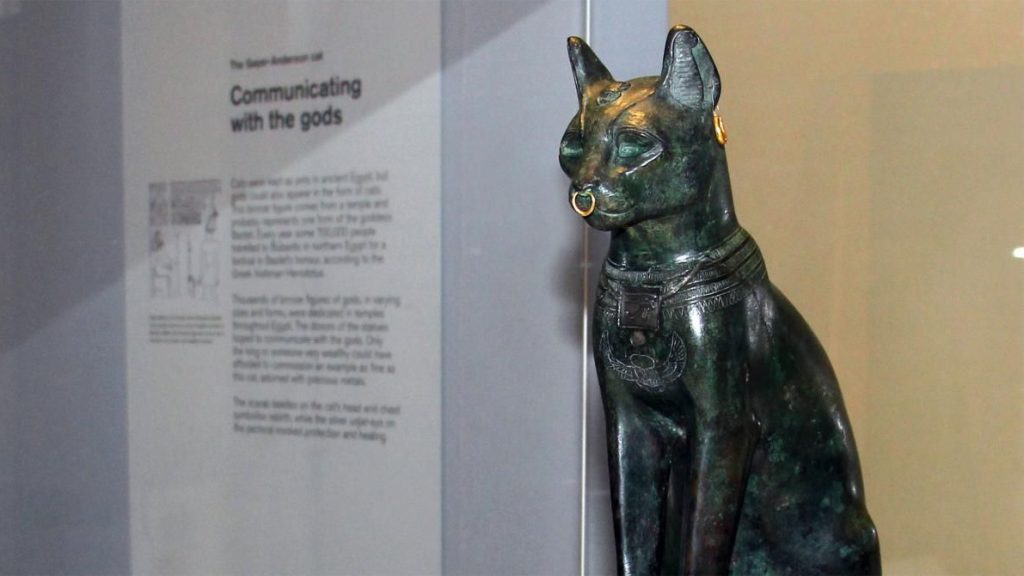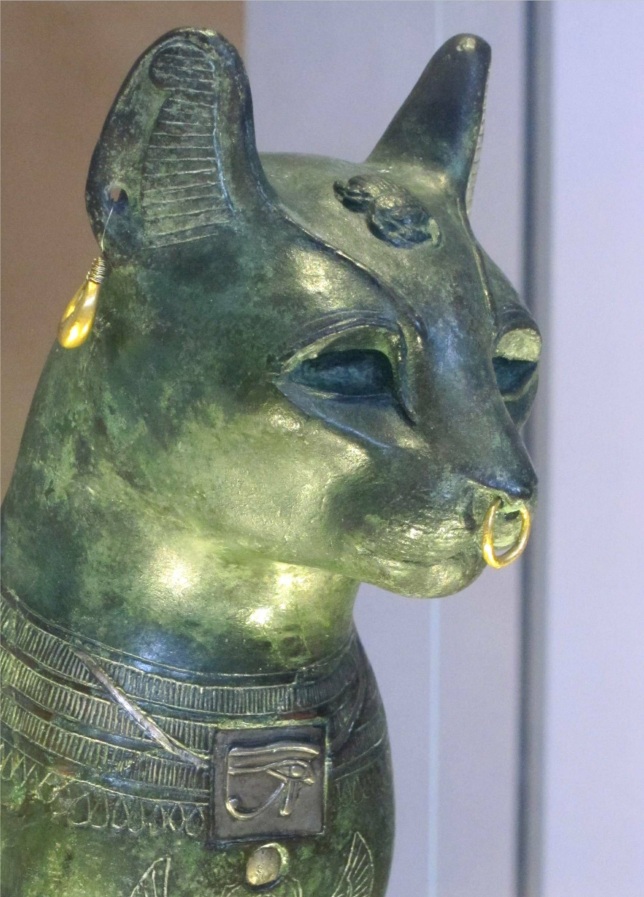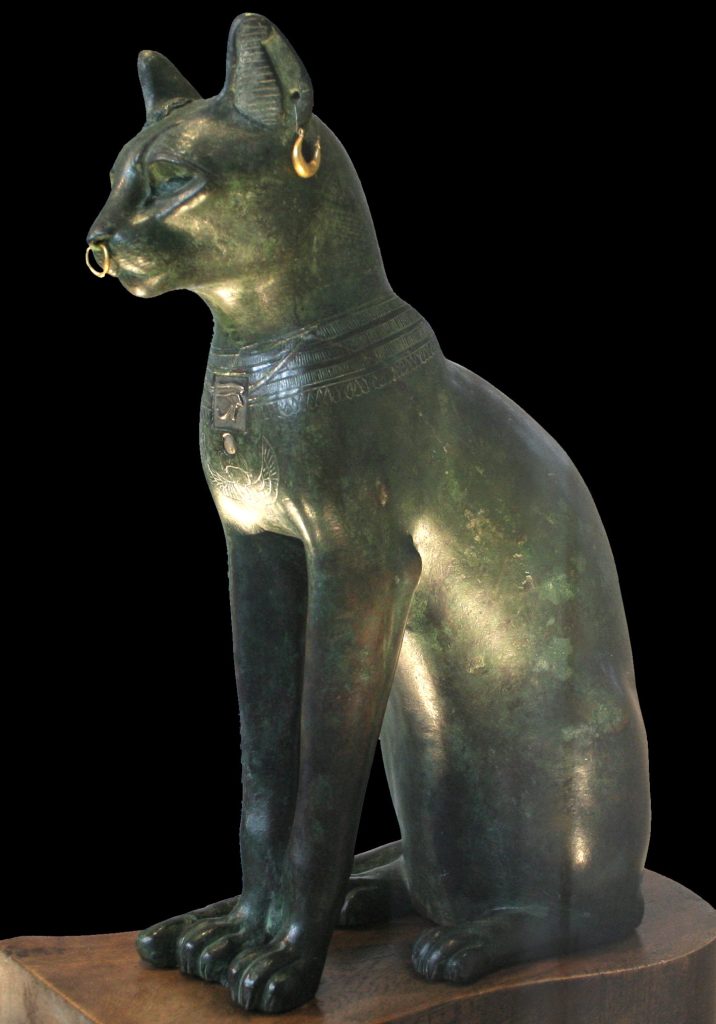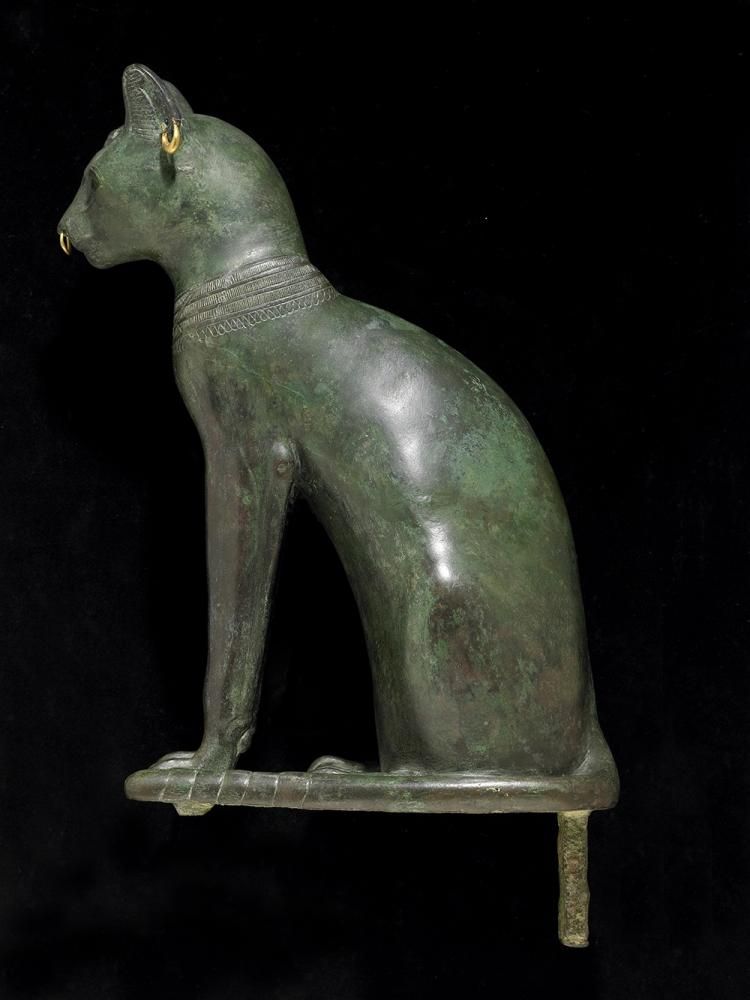Introduction

The Gayer Anderson Cat, located at The British Museum in London, is a striking ancient Egyptian sculpture and one of the most popular collections in the museum. This cat shaped statue was made during the ancient Egyptian era and has a rich historical, cultural, and mysterious background. This article will provide an in-depth introduction to Gayer Anderson Cat, including its historical origins, artistic value, and connection with ancient Egyptian culture.
Gayer Anderson Cat: A Witness to History
This ancient sculpture is called the Cat of Gail Anderson, named after its former owner, John Gayer Anderson, a British diplomat and collector. Gayer Anderson worked in Egypt in the early 20th century and developed a strong interest in ancient Egyptian culture and art. He regarded this cat shaped statue as a very special collection and donated it to the British Museum in London in 1939.
The Historical Origin of Statues

The history of the Gayer Anderson Cat can be traced back to the Greek Roman period from 664 BC to 332 BC, which is the late period of ancient Egypt. This period is known as the Greco Roman era because Egypt was ruled by ancient Greece and Rome during this period. The material used to make the statue is bronze, which is relatively rare in ancient Egyptian art as it was mostly made of stone or wood.
Gayer Anderson Cat is a statue of a cat sitting in an alert state, with its eyes adorned with precious turquoise. Cats held a special position in ancient Egyptian culture, regarded as pets, talismans, and even deities. They played an important role in the life of ancient Egypt, linked to symbols of women, families, and guardians of their homes.
Artistic value and details
The artistic value of Gayer Anderson Cat lies in its exquisite craftsmanship and details, as well as its profound connection with ancient Egyptian culture. The following are some notable features:
Realistic expressiveness: The creator of the statue captured the appearance and dynamics of the cat with astonishing accuracy, from the lines of the muscles to the posture of the cat, all vividly portrayed.
The Treasure of Turquoise: The turquoise eyes of the statue are one of its most striking features, and this gem was considered a talisman in ancient Egypt, symbolizing life and regeneration.

Witness to History: This statue is not only a work of art, but also a witness to ancient Egyptian culture and religion, documenting the beliefs and ways of life of that era.
Symbols of Ancient Egyptian Culture
The Gayer Anderson Cat carries rich symbols of ancient Egyptian culture:
Holy Cat Worship: The ancient Egyptians worshipped cats as sacred creatures, combining them with the role of pets.
The Mystery of Turquoise: Turquoise is considered to have a special mysterious power in ancient Egyptian culture, related to regeneration, shelter, and protection.
Cultural Heritage: This statue represents the inheritance of ancient Egyptian culture, allowing people to better understand the values and beliefs of ancient Egyptian society.

Conclusion
The Gayer Anderson Cat is an important collection that not only has outstanding artistic value, but also carries rich ancient Egyptian culture. This cat shaped statue is a witness to the tradition and faith of worshipping cats in ancient Egypt, and is also an outstanding representative of ancient art and craftsmanship. Its existence not only provides us with a window to glimpse ancient Egyptian society, but also allows us to appreciate the exquisite skills of ancient craftsmen and their profound understanding of nature. As one of the precious collections of the British Museum in London, it will continue to showcase the mysterious charm of ancient Egyptian culture to the world.

